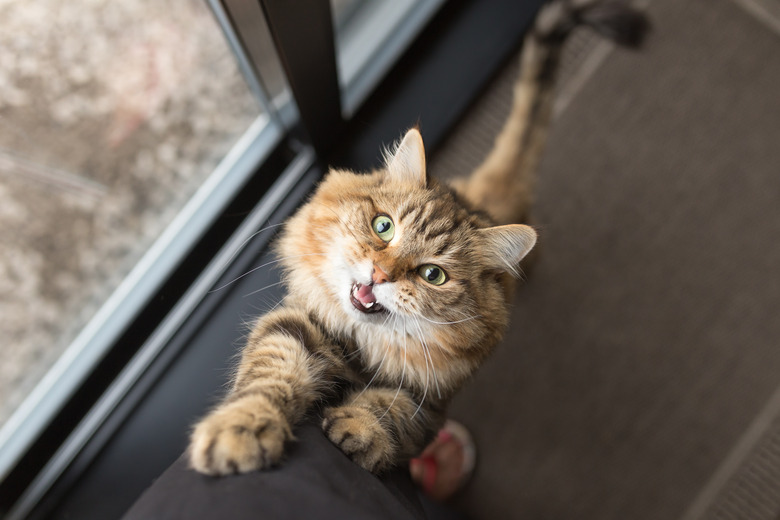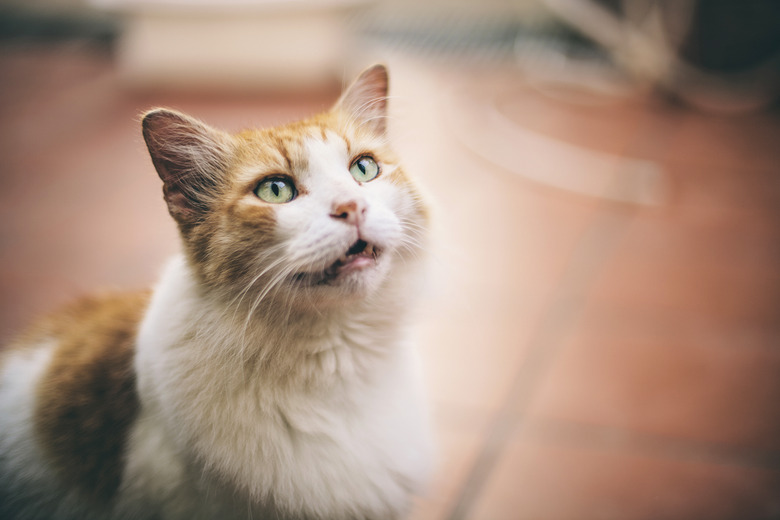What Is Trilling In Cats?
If you have a cat, you are no stranger to the fact that felines utilize many different forms of communication. While they can tell you a lot through body language, cats are big on vocal communication as well. You may be greeted with a friendly "meow" when you get home from work, or hear your cat purr when they're sitting with you on the couch.
Because of their well-developed vocal tracts, cats have a wider range of vocal production than most other pets. This means that cats can utilize many different sounds to communicate a variety of needs and emotions. One of these sounds is known as trilling.
What is trilling?
What is trilling?
Trilling is a type of vocalization that is perhaps best described as a cat rolling their "R"s. Depending on the specific trill, it may also sound as though the cat is attempting to mimic a car's motor starting. Not all cats trill — in fact, whether your cat vocalizes a lot or a little will depend on its individual breed and personality.
However, if you find that your cat is making this specific noise, there are a number of reasons why they might be doing it. Similar to a cat's meow having multiple meanings — a greeting, a want (usually for food), or a sign that something may be wrong — trilling can have a different purpose depending on the scenario in which it occurs.
Why cats trill at each other
Why cats trill at each other
One instance in which felines may trill is when a mother cat wants to communicate with her kittens. When a mother cat trills, she does it to signal to her kittens that she wants them to follow her. An adult cat may also trill at another adult cat. When this happens, it means that the cats are conversing. The Humane Society of the United States notes that if you have more than one cat in your home, you may witness them using trilling to talk to each other.
Why cats trill at humans
Why cats trill at humans
Trilling is one of the many cat sounds that was developed as a way to communicate with humans. Similar to a meow, a cat may trill at a human because it wants something. More specifically, though, a cat may trill to indicate that they want you to follow them. They may be trying to show you something, or more likely, they would like you to fill up their food bowl.
Cats may also trill at humans as a sign that they are happy or excited. In some instances, it is used as an affectionate greeting.
How is trilling different from other forms of cat communication?
How is trilling different from other forms of cat communication?
The most basic way that trilling is different is the sound itself — it is more vocal than a purr, and it is slightly more prolonged than a chirp or meow. Its meaning also contrasts with that of many other cat sounds. Unlike a "mew," a high-pitched squeak, or a yowl or howl, trilling is not a sound that cats make to indicate that they're distressed.
Trilling is also one of the few forms of vocal communication between adult cats. According to the American Society for the Prevention of Cruelty to Animals, kittens meow at their mothers, but once they've grown up a bit, they don't meow at each other. The exceptions to this are female cats screaming when they are in heat, and one cat hissing or growling at another as a show of aggression. But these instances are (hopefully) few and far between.
If your cat begins to trill, listen and try to figure out what it is that they want. It's probable that they're either happy to see you, or they're ready for dinner.

